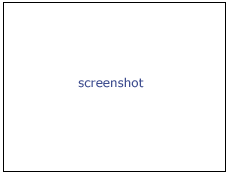Slicer3:Module:Rician Noise Removal
Module Name
Rician Noise Removal in Diffusion Tensor MRI
General Information
Module Type & Category
Type: CLI
Category: Filtering DWI and tensors
Authors, Collaborators & Contact
- Saurav Basu: University of Utah
- Thomas Fletcher, University of Utah
- Ross Withaker, University of Utah
- Contact: Thomas Fletcher
Module Description
Rician noise introduces a bias into MRI measurements that can have a significant impact on the shapes and orientations of ten- sors in diffusion tensor magnetic resonance images. This is less of a problem in structural MRI, because this bias is signal dependent and it does not seriously impair tissue identification or clinical diagnoses. However, diffusion imaging is used extensively for quantitative evalua- tions, and the tensors used in those evaluations are biased in ways that depend on orientation and signal levels. This paper presents a strat- egy for filtering diffusion tensor magnetic resonance images that ad- dresses these issues. The method is a maximum a posteriori estima- tion technique that operates directly on the diffusion weighted images and accounts for the biases introduced by Rician noise. We account for Rician noise through a data likelihood term that is combined with a spatial smoothing prior. The method compares favorably with several other approaches from the literature, including methods that filter dif- fusion weighted imagery and those that operate directly on the diffusion tensors.
Usage
DWI filtering
Examples, Use Cases & Tutorials
USAGE:dwiFilter <arguments> Arguments: 1. Input File Name 2. Output File Name 3. NumIterations 4. Conductance 5. TimeStep 6. Filter Type : (Simple Aniso-0,Chi Squared-1,Rician-2,Gaussian-3) 7. Sigma for bias correction 8. Lamda (Rician Correction Term) 9. Lamda (Gaussian Correction Term)
Argument Description:
<Input File Name> Name of the DWI file to be filtered. For example <noisyDWI_10.nhdr> is a noisy DWI file provided in the data directory. It was generated by adding synthetic Rician noise with a sigma=10 to a cleanDWI.nhdr
<Output File Name> Name of the filtered DWI file. For example <filteredDWI.nhdr>
<NumIterations> Number of iterations you want to run the filter for.
<Conductance> The value of the conductance term in anisotropic diffusion filtering (Ex: 1.0) Note: Large Conductance will oversmooth the image It is important to tune the conductance to obtain best results.
<Filter Type>
Can Take 3 values: 0 means perform simple anisotropic diffusion 1 means perform Chi-Squared smoothing (square the image and perform anisotropic diffusion and then subtract the variance of the noise, and take square root. (The square of a Rice distribution is a Chi Squared distribution with known bias equal to the variance of the noise) (Refer:Max Likelihood Est. of Rician Ditribution Parameters. Sijbers et. al)
2 means Perform Rician bias correction filtering. (Refer: Rician Noise Removal in DT-MRI.)
3 is same as 2 except use a Gaussian Attachment Term .
<Sigma> Estimate of noise in the data. This can be done by squaring the airvoxels in the real data. The sum of square of all the intensities in the air region should equal 2*variance of the noise in the data. (Sijbers et. al)
<lamda1, lamda2> The weights for the Rician and Gaussian attachment terms.
EXAMPLE
dwiFilter ../data/noisyDWI_10.nhdr filteredDWI.nhdr 1 1.0 0.0625 2 10 100 0
Filters the noisyDWI_10.nhdr for 1 iteration with a conductance of 1.0 timeStep 0.0625 using Rician filtering with a Rician attachement term weight of 100. The estimate of noise in the input image is a sigma of 10 The filtered image is filteredDWI.nhdr.
- Note use cases for which this module is especially appropriate, and/or link to examples.
- Link to examples of the module's use
- Link to any existing tutorials
Quick Tour of Features and Use
List all the panels in your interface, their features, what they mean, and how to use them. For instance:
- Input panel:
- Parameters panel:
- Output panel:
- Viewing panel:
Development
Dependencies
Other modules or packages that are required for this module's use.
Known bugs
Follow this link to the Slicer3 bug tracker:
http://na-mic.org/Mantis/main_page.php
Usability issues
Follow this link to the Slicer3 bug tracker. Please select the usability issue category when browsing or contributing:
http://na-mic.org/Mantis/main_page.php
Source code & documentation
Customize following links for your module:
http://www.na-mic.org/ViewVC/index.cgi/
Links to documentation generated by doxygen:
http://www.na-mic.org/Slicer/Documentation/Slicer3/html/
More Information
Acknowledgement
Include funding and other support here.
References
Publications related to this module go here. Links to pdfs would be useful.
